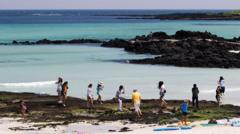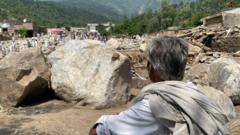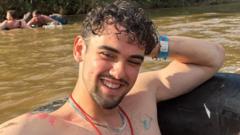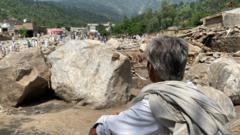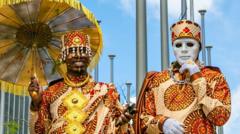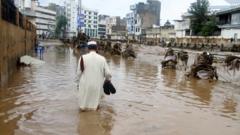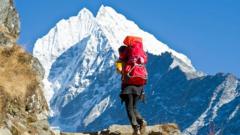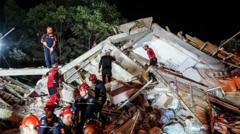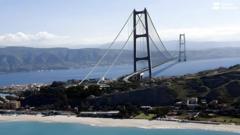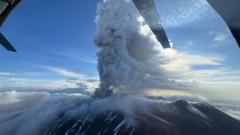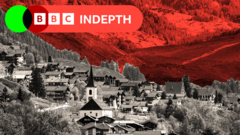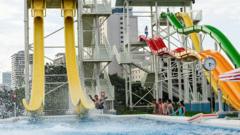As concerns over potential volcanic activity grow, experts are conducting essential research on Santorini's underwater volcanoes to inform the local community and enhance safety measures while the island's tourism industry remains vulnerable.
Santorini's Volcanic Safety Under Scrutiny Amidst Recent Earthquakes

Santorini's Volcanic Safety Under Scrutiny Amidst Recent Earthquakes
Scientists embark on a critical expedition to assess the risks of volcanic eruptions on the picturesque Greek island of Santorini following a series of alarming earthquakes.
Santorini, known for its stunning vistas and thriving tourism sector, is facing renewed scrutiny as scientists investigate the potential hazards associated with its underwater volcanoes. The idyllic island, which boasts over 11,000 residents, is situated atop a geological hotspot marked by a dramatic caldera formed by a massive eruption around 1600 BCE. Recent tremors have prompted fears about the risk of an imminent volcanic event, leading to the deployment of a British research vessel, the RRS Discovery, to explore and assess the seafloor dynamics under Santorini.
Residents recently experienced widespread evacuations due to a series of earthquakes, reminding the community of the geological forces at play beneath its picturesque surface. Professor Isobel Yeo, leading the expedition, emphasizes that many underwater volcanoes remain largely unmonitored despite their potential for catastrophic eruptions. With increasing geological activity noted in the vicinity, including a surge of magma in the volcano's chambers, the need for proactive research has never been clearer.
The team aboard the Discovery is deciphering the complexities of the hydrothermal systems that exist under the surface, where hot gases and fluids escape through fissures. Researchers aim to create geohazard maps that could categorize areas at risk and provide vital information for local authorities and the community on evacuation zones should an eruption occur. In a landscape where seismic activity is often deemed normal, Isobel warns against complacency: “We are lulled into a sense of false security,” she remarks, acknowledging the destructive potential hidden beneath the waves.
Along with evaluating Santorini's caldera, the scientists are also examining the nearby Kolombo volcano. Though immediate eruptions are not expected, the thorough research aims to understand long-term volcanic behavior and risks, aiding the Greek Civil Protection Agency in crafting efficient emergency plans.
Local residents like Professor Paraskevi Nomikou, a native of Santorini, have a personal stake in the outcome of this research, as their livelihoods depend heavily on the tourism industry, which has seen a decline in visitors amid fears of volcanic events. The impact of earthquakes has already been seen, as businesses, especially those centered around tourism, have reported cancellations, and photographers like Eva Rendl express concern over diminished bookings.
As the expedition continues to collect data and assess the geological activity, both residents and tourists remain hopeful that scientific insights will lead to improved safety measures while preserving the allure of Santorini. Tourists like Janet express the necessity of accurate information to alleviate safety fears, while newlyweds Tom and Kristina affirm that the island’s beauty remains irresistible despite the geological risks.
The juxtaposition of Santorini’s enchanting allure with the underlying volcanic threat paints a complex picture of a destination that continues to attract visitors—and residents—despite the perils that loom just beneath its surface.

